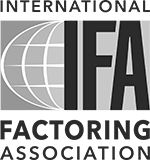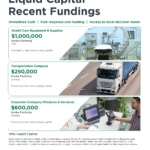The Thanksgiving-to-Christmas Dilemma: White Elephants and Chocolate Turtles or Factor-Fueled Growth Plans?
About this time every year, cellophane-wrapped gift baskets begin appearing around the office. Eccentric items like jalapeño-apricot jelly and the imperishable Summer Sausage stick around for a while. The office raiders usually pillage the chocolate turtles first. The devastating mix of chocolate- and caramel-covered popcorn known as “Moose Munch” disappears into nearby cubicles and offices.
This is the scene playing out in thousands of offices right now. Between Thanksgiving and Christmas, most businesses shift into holiday hibernation mode. Offices get decorated. Silly gifts get exchanged. People take a vacation. The actual work of growing the business gets postponed until January.
But smart operators see this period differently. They see opportunity.
While competitors are occupied with ugly sweaters and secret Santas, smart business owners are clearing obstacles from their path. They’re addressing cash flow constraints now, so those constraints don’t become January crises. They’re planning strategic moves for next year’s holiday period so they can execute while competitors are coasting.
Your Near- and Long-Term Opportunities
You have two critical planning windows in front of you.
First, clear your path for Q1 2026. You have roughly six weeks before the calendar flips. Your competitors will spend that time in holiday mode. You can spend it identifying and removing the cash flow obstacles that will trip you up in January, February, and March.
Second, start planning for this same time next year. The businesses that made strategic moves during last year’s Thanksgiving-to-Christmas window planned well in advance. Nintendo planned its November 2006 Wii launch months in advance. Bristol Myers Squibb negotiated its $14 billion acquisition throughout fall 2023 before announcing it three days before Christmas.
Our takeaway: execution happens during the holidays, but planning happens now.
Hit the Ground Running (Or Get Hit)
January hits most manufacturers, distributors, and service companies like a freight train. Orders that were delayed in December all land at once. Suppliers want payment for December purchases. Employees return from vacation expecting paychecks. The phone starts ringing again.
Your invoices from those December orders won’t get paid for 30, 60, or 90 days. But your costs are due now. You need to pay your crew. You need to buy raw materials for February orders. You need to cover rent, utilities, and insurance.
This is when cash flow gaps turn into cash flow crises.
Three Liquid Capital clients show how smart operators factor strategically.
A trucking company factors invoices two to three times per month, covering 40 to 50 loads annually. The company doesn’t wait for large freight brokers to pay on their extended terms. When customer payments stretch beyond 30 days, they convert those receivables to immediate working capital. Their trucks stay on the road. Their drivers get paid on time. They accept additional contracts without worrying about funding gaps.
The owner puts it simply: “Before partnering with Liquid Capital, we were always waiting on payments to fuel the next trip. Now, our trucks stay on the road, and our team gets paid on time every time.”
An automotive parts company factors weekly, turning over $50,000 to $60,000 in receivables per month. They use invoice factoring strategically to handle the timing gap between when supplier payments or tax remittances come due and when client payments clear. The company also factors to pay down higher-interest merchant cash advances, saving thousands in interest each quarter.
“Liquid Capital helped us escape a debt spiral,” the owner explains. “Instead of juggling payments, we can focus on keeping customers rolling and the shelves full.”
An educational supplies company factors monthly, averaging $300,000 to $400,000 in receivables tied to school district purchase orders. When large institutional clients issue purchase orders with 60 to 90-day payment terms during peak academic budgeting cycles, the company uses factoring to bridge the gap between delivery and payment. This lets them fulfill major contracts, support steady growth, and invest in new product development without seeking equity or taking on restrictive debt.
“Factoring turned our biggest problem, delayed school payments, into a strength,” says the company. “We can now fulfill large orders quickly and keep scaling without dilution.”
What Smart Operators Are Doing Right Now
These three companies didn’t stumble into working capital solutions during a crisis. They planned ahead. They identified cash flow timing issues that would constrain growth. They put systems in place before constraints became emergencies.
You can do the same thing between now and year-end:
Audit your Q1 cash flow timing. Pull your calendar and accounting software. Look at when major expenses hit in January, February, and March. Compare that to when customers will actually pay invoices. Most manufacturers and distributors discover that Q1 looks great on paper, but terrible in actual cash flow timing.
Calculate your true working capital needs. Run the numbers. Include:
- Payroll
- Rent
- Materials
- Utilities
- Insurance
- Equipment costs
- A buffer for unexpected expenses or opportunities
Identify your growth constraints. What opportunities will you miss in Q1 if cash flow timing limits capacity?
- That large contract you’ve been chasing
- The equipment upgrade that would speed production
- The ability to offer better payment terms than competitors
Build relationships with working capital partners now. Don’t wait for crisis mode. The best time to secure financing is when you don’t desperately need it.
The Advantage of Taking Action While Others Coast
When most businesses enter holiday mode, decision-makers become unavailable. Competitors reduce capacity. The market gets quiet.
For businesses maintaining operational tempo, this creates openings. You can negotiate better terms with suppliers closing out their year. You can recruit top talent when competitors aren’t hiring. You can plan strategic initiatives without the usual noise.
But you can only take advantage of this window if you’re not constrained by cash flow. Invoice factoring provides that flexibility without adding debt or giving up equity. You convert receivables you’ve already earned into immediate working capital.
What Happens If You Wait Until January?
January arrives whether you’re ready or not. Orders that were postponed in December all hit at once. Your cash tied up in unpaid invoices doesn’t help you meet obligations.
This is when business owners make desperate decisions:
- Turn down profitable contracts
- Stretch supplier payments and damage relationships
- Delay hiring or equipment purchases
- Turn to high-interest debt or give up equity
The businesses that plan ahead avoid these tradeoffs. They identify cash flow constraints in November and address them before those constraints become January crises.
Your November and December Action Plan
You have roughly six weeks until year-end:
This week: Audit your Q1 cash flow. Block two hours. Map when expenses hit and when payments arrive.
Week of November 25: Talk to financial advisors about working capital solutions. Understand your options before you need them.
Early December: Build your strategic plan for next year’s holiday period. What moves could you make between Thanksgiving and Christmas 2025?
Mid-December: Finalize your Q1 execution plan. Know exactly what opportunities you’ll pursue and what working capital you need available.
Late December: Confirm all systems are in place. Your working capital facilities are ready. Your growth plans are documented. You’re positioned to move while others crank cold engines.
Survive or Thrive?
Most businesses survive:
- Cover expenses and pay bills
- Respond to opportunities when cash flow allows
Some businesses thrive:
- Anticipate constraints before they become crises
- Act on opportunities regardless of payment timing
- Plan strategic initiatives while competitors coast
The difference isn’t luck or capital. It’s planning. The businesses that thrive see problems coming and address them before those problems limit growth. They remove obstacles from their path instead of tripping over them.
The Liquid Capital clients we introduced all chose to address cash flow timing proactively. They didn’t wait for crises. They partnered with working capital solutions to convert their receivables into immediate liquidity on a timeline that supports growth instead of constraining it.
[Read more Liquid Capital client success stories.]
You can make the same choice. You have six weeks to audit your Q1 cash flow, identify constraints, explore solutions, and build your strategic plan. Six weeks to position yourself for breakthrough growth while competitors gorge on gold foil-wrapped magic pears.
Ready to Clear Your Path?
If you recognize the cash flow timing challenges in your own business, Liquid Capital can help you evaluate solutions that align with your industry, growth stage, and strategic objectives.
For manufacturers, distributors, and service companies with creditworthy customers and payment timing gaps, invoice factoring provides immediate working capital without debt or equity dilution. Your receivables represent value you’ve already created. Factoring lets you access that value on a timeline that supports your objectives instead of constraining them.
The best time to explore these solutions is now, when you’re planning rather than panicking. Contact Liquid Capital before the January freight train appears on the horizon.
Visit our blog to learn more about strategic factoring and strengthen your approach to business financing and working capital solutions.



